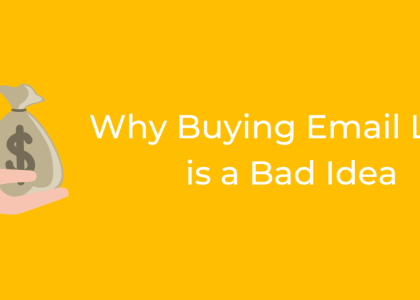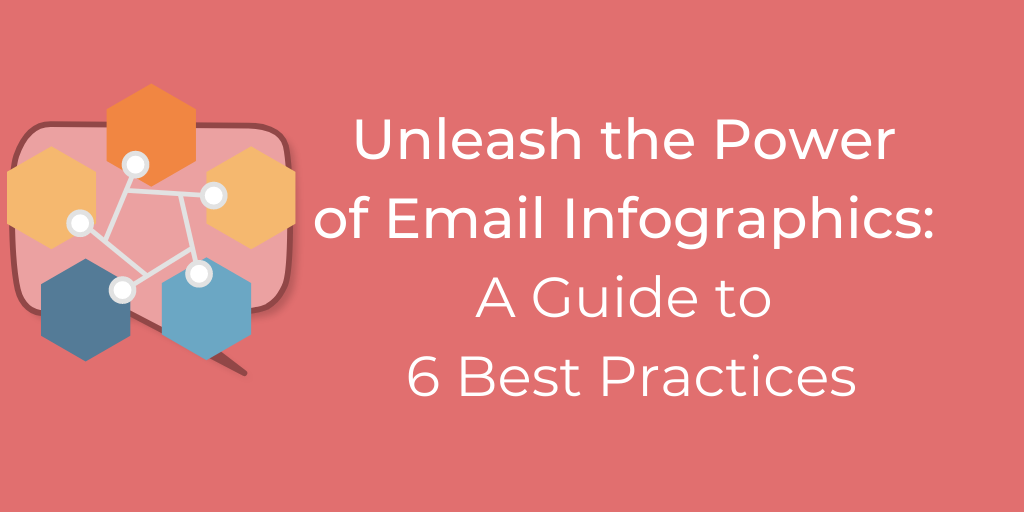Quick links
Discover What Lessons Caught Us by Surprise
Case studies are instructive. It’s great to see examples of real companies growing their business. Experienced email marketers have a lot of wisdom. Some of them are kind enough to share it. Let’s take a look at six surprising email marketing takeaways.
Customers Want (and Enjoy) Regular Promotional Emails
Your Customers Like Your Emails More Than You Think
Return Path did a case study about email marketing frequency. Their goal was to find the optimal send frequency. In order to find this, they studied 13,836 email subscribers in the apparel industry. It’s common knowledge that subscribers don’t appreciate an abundance of promotional emails. Yet, you would be remiss to think that customers don’t like promotional emails at all. According to the Return Path study, 61% of consumers said they would like to receive a promotional email weekly (or more often). The takeaway is that promotional emails aren’t a necessary evil. Most of your customers like (and want) them. Just like in Goldilocks and the Three Bears, the trick is finding a frequency that is just right.
You Can Have Success Without a Regular Newsletter
Scheduled Newsletters Are Optional
Dashlane competes in the password manager space. If you’re unfamiliar with this space, the first thing to know is many people aren’t good at managing their online passwords. People often reuse passwords, or they forget the complex ones they create. Dashlane creates rock-solid passwords for you, and logs you in automatically.
Dashlane skyrocketed their revenue by asking their email list for reviews. After 40 reviews, they were indexed by Google Adwords. This caused a snowball effect. Their PPC campaign got more exposure, and they grew their list even more. In other words, they got an avalanche of new traffic. The surprising part is what they did (or didn’t do) with their new list. The Dashlane team doesn’t send a monthly newsletter. Instead, they only send emails when they have something to say. According to David Rostan, the head of organic marketing for Dashlane, their customers take heed of their brevity. David quips, “When Dashlane does send an email, people pay attention to it.”
The key takeaway is that a monthly newsletter isn’t right for every industry. Dashlane understands its customer base. Their subscribers aren’t ravenous NFL (or NBA, MLB, or NHL) fans, lapping up news like a thirsty tiger. They are casuals. Sure, they care about security, but they only want an update when something big happens. Moreover, frequency isn’t paramount.
Astonishing Email Marketing Bloopers Are Made By Large Companies
Extra Form Fields Are a Barrier to Entry
Golf Channel, a network owned by NBC, used 13 mandatory form fields on their lead page.
That’s an amazing (and skyhigh) number. Let’s take a look at the logic of form fields. If you have a lot of form fields, your leads are more qualified. On the other hand, fewer people will sign up for your list. Naturally, the reverse is also true. Fewer form fields mean more leads, but less qualified leads.
Golf Channel decided that less may be more. They reduced their mandatory form fields from 13 to 1. Their marketing director, Carolina Castaneda, remarked, “We were asking you for a lot of information right? There was a high barrier of entry for you to be one of our subscribers.” It turns out her hypothesis was correct. Golf Channel boosted the size of its subscriber database by 32%, a direct result of shedding those mandatory fields.
The surprising takeaway is not that removing form fields boosts conversion. This is a well-documented fact (in fact some marketers say a 120% boost is to be expected). The surprising takeaway is that a company would use 13 mandatory form fields in the first place. It goes to show you email marketing basics are misunderstood by large and small companies alike.
An Expression of Individuality Sparks Social Media Sharing
Dormify is a furniture company that markets to Millennials in college (and those getting their first apartments). They mixed social media and email marketing with impressive results. Overall, a series of email marketing improvements helped them bump up their email revenue by a whopping 92%. Here’s what Nicole Gardner, the Chief Operating Officer, had to say about it, “We have a call-to-action that encourages them to share their space on social media. That’s actually been really really successful for us because we see, especially with that age group, they’re highly motivated to show off what they’ve designed and decorated with the products that they’ve purchased.” A gem can be mined from this quote.
First of all, this quote is a great commentary about social media. A key takeaway is people like to share things that express their own identity. One of the appealing elements of Dormify is the ability to customize your room. Their furniture combinations, their layout, their style, is different from John (or Daniel) across the street. The ability to express individuality makes it more fun to share.
Getting email subscribers to post about your brand is never easy. Yet, if you encourage your subscribers to express their individuality, your chances of success peak.
Mixing Curated and Original Content Brings Potent Results
Mixing and Matching Is a Fantastic Option
United Capital is a financial services company in Newport Beach, California. They target people with over 500,000 in assets. Their goal is to help clients with savings, investing, and money management. Christina Martin, the Vice President of Digital Marketing, noted something special about their newsletter, “It’s a mix of both original and curated content, which is something a little bit different than what most people are doing for their customer or prospect email.”
This mix was key to rebranding their newsletter. And what a successful rebrand it was. Ultimately, it led to a 145% engagement increase with their subscribers. Christina mentioned that her competitors usually offered curated content or original content. United Capital was able to outpace rivals by offering both. Let’s take a look at the disadvantages of only offering one type of content.
What’s the disadvantage of only sending 0riginal content? Your subscribers are hungry for (good) content. Consider this scenario. There’s a T-Rex outside. Do you think she’ll be happy with a tiny piece of filet mignon? No, she won’t be. You need to give her more meat. But, keep in mind that filet mignon is expensive. Likewise, your email subscribers are hungry for good content. It’s expensive, even cost-prohibitive, to have your employees create a deluge of top-tier content. Trying to completely match effective curation is like rolling a boulder uphill.
Yet, undistilled curation has disadvantages too. Think about the first mover principle. Speed is quite the advantage. If you create amazing original content (along with winsome copy), people will love opening your emails. There’s something about original content that can’t be replicated with curation. Perhaps it’s speaking to your unique list with your unique words.
Quite simply, a blend of curated content and original content is ideal in many industries. It’s surprising more email marketers don’t use the two in harmony.
Here’s a hint about content curation. You can use content curation to make better original content. For instance, you can make an infographic of a popular blog post. Or you can make a good blog tutorial even better by adding screenshots or video. These types of posts are sometimes called skyscraper posts. By curating content, you’ll see what type of content is popular, what kind of content gets the most comments, shares, and likes. This knowledge will edify you, giving you a better read on what the market wants.
Small Prizes Can Bring Big Results
A Little Goes a Long Way
The State Fair of Texas is rich in history. It’s origins began in 1886. Today the fair has over 3 million visitors. Yet, they refuse to rest on their laurels. They recently realized their email marketing campaign left a lot to be desired.
Jason Hays is the Director of Creative Services for the Texas State Fair. He launched a giveaway to boost email subscribers. The results astonished him. Hays said he gave a little (a deluxe goody bag worth $250) and gained a lot, “The first time we did it, we got 16,000 entries, which all went into our database. We noticed that trade off with doing enter to wins and stuff like that to gain those emails was extremely valuable to us.”
“Extremely valuable” sums it up quite well. You’d be hard-pressed to find a business that wouldn’t jump at the chance to get 16,000 leads for $250. What’s surprising is he got so many targeted leads for that price. It proves that giveaways have the potential to deliver a massive ROI.
Making Mistakes Is Natural
It was the age of wisdom, it was the age of foolishness. Charles Dickens rings true over 100 years later. The companies in these case studies embody wisdom and foolishness. For instance, the Golf Channel had 13 mandatory form fields on their lead capture page. They admitted that was none too shrewd. Yet, their email marketing team eventually reduced it to one, causing signups to skyrocket 32%.
Here’s the takeaway. All companies make mistakes. The big companies. The small companies. The medium-sized companies. Making these errors, these gaffes, is a natural part of email marketing. Don’t get down because of miscalculations. Keep A/B testing. Turn defeat into triumph. Rise on stepping stones of your dead self to higher things.
Join Our Monthly Newsletter
Learn how to improve email deliverability and clean your email lists with and more.


